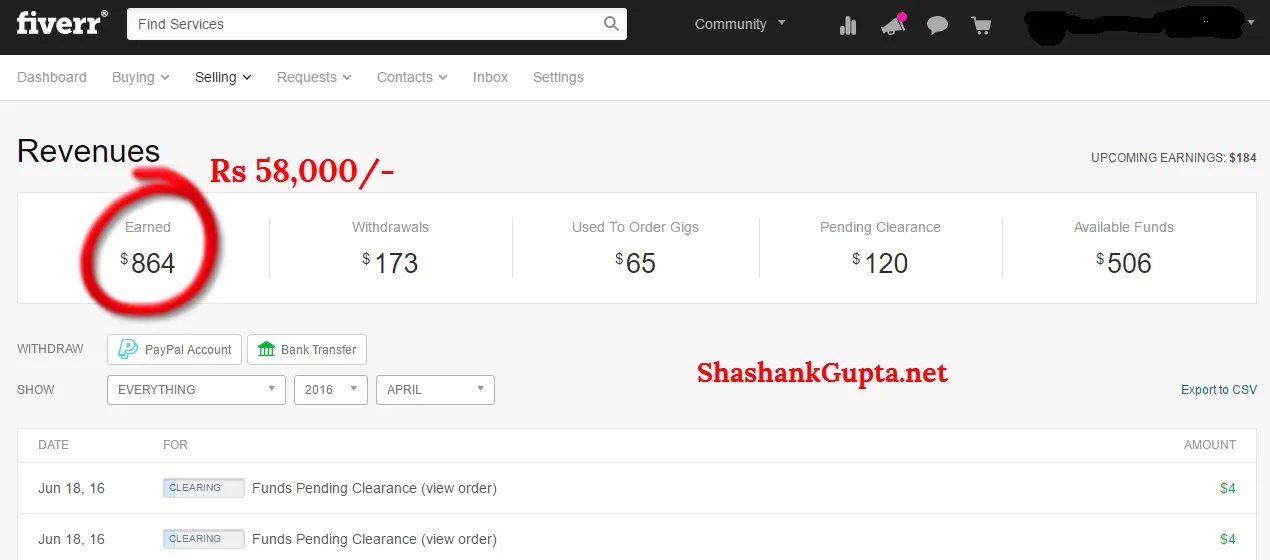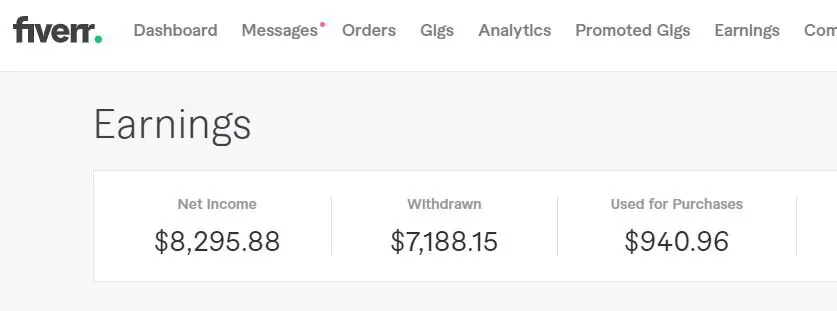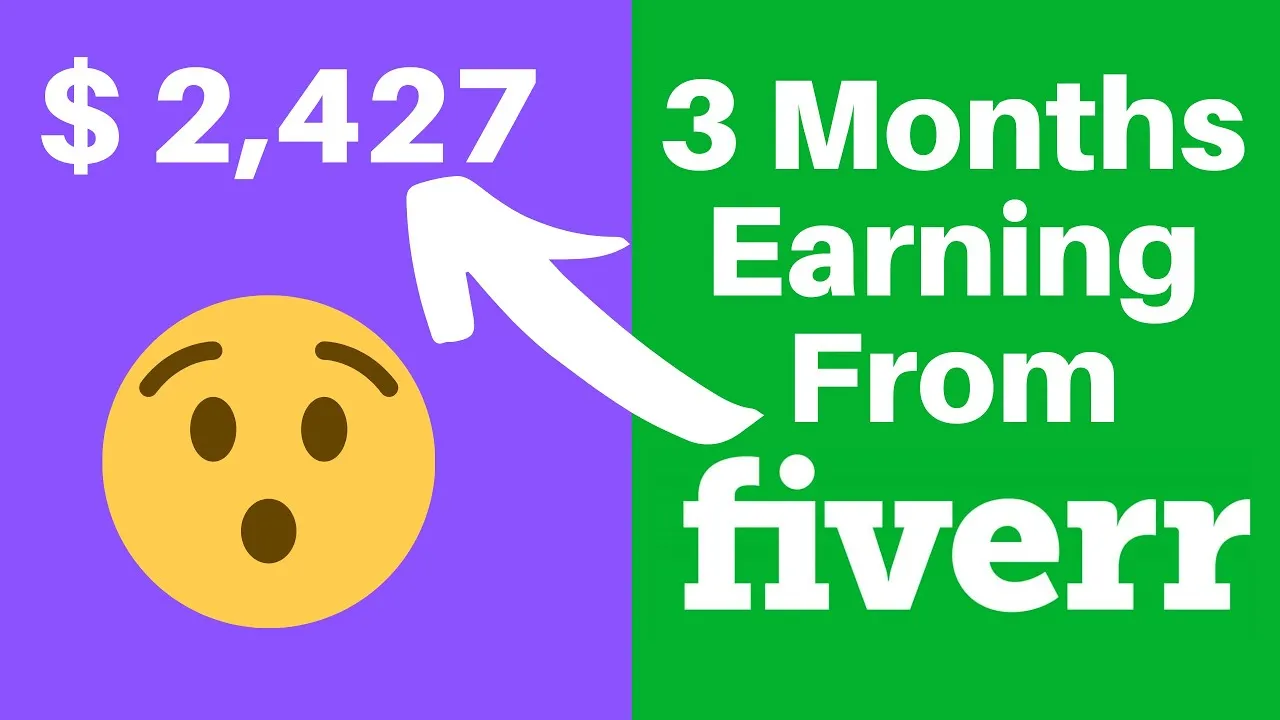Fiverr is a popular online marketplace that connects freelancers with clients looking for a wide range of services. Launched in 2010, this platform has revolutionized the way people work, allowing individuals to offer their skills and services—from graphic design to writing, and even programming—on a flexible basis. For many freelancers, it’s a golden opportunity to monetize their hobbies or professional skills. With millions of gigs available, Fiverr provides both buyers and sellers with the freedom to navigate their work and budget considerations efficiently.
As a freelancer on Fiverr, you can set your own rates, choose your workload, and communicate directly with clients from all over the world. This flexibility, combined with a user-friendly interface, has made Fiverr a go-to platform for millions. However, just like any platform, understanding how Fiverr works—especially the financial side—is essential for freelancers. After all, if you're going to invest time and effort into creating gigs and satisfying clients, you'll want to ensure you're getting the most out of your earning potential!
2. Understanding Fiverr's Commission Structure

When considering earnings on Fiverr, it's crucial to familiarize yourself with its commission structure. Fiverr operates on a simple model: it charges a commission on every transaction. Here’s how it works:
- Standard Commission Rate: Fiverr retains a 20% commission from your earnings. This means that for every gig sold for $100, you only receive $80.
- Service Rates: You can set your own prices for your services, but keep in mind that the platform takes its cut from whatever you charge.
- Additional Fees: Clients may also incur service fees on top of what they pay for your gig, which can range from $2 for purchases under $40 to 5% for larger amounts.
This model encourages quality work and customer satisfaction, as both parties benefit from successful transactions. It’s essential to factor in Fiverr’s commission when setting your prices to ensure you’re not undercutting your own earnings.
Here’s a simple table to illustrate how the commission affects different earning scenarios:
| Gig Price | Earnings After Commission (20%) |
|---|---|
| $50 | $40 |
| $100 | $80 |
| $200 | $160 |
Understanding this commission structure allows you to strategize on how to price your services effectively while maintaining a healthy profit margin. Remember, your time and expertise are valuable, and it’s important to set rates that reflect that!
Also Read This: Does Fiverr Have a Bidding System?
Different Earnings Models on Fiverr

When it comes to earning money on Fiverr, it's essential to understand the various earnings models available to freelancers. Each model caters to different skills, services, and client interactions, so let's break them down:
- Fixed-Price Jobs: This is the most common model on Fiverr. Here, you set a specific price for your service, and clients can buy it directly. The beauty of this model is that you can clearly outline what deliverables clients will receive, making it easier to manage expectations.
- Milestone Payments: This model allows you to divide a project into phases, each with its own payment. It’s particularly useful for larger, complex projects where clients want to ensure quality at each stage.
- Hourly Gigs: If you prefer to charge by the hour, Fiverr allows you to set an hourly rate for your work. This model is flexible, especially for services that may require adjustments and back-and-forth communication.
- Packages: This model lets you create tiered offerings for different levels of service. For example, you could offer a basic, standard, and premium package, each providing varying degrees of service at different price points. It’s a great way to cater to different client budgets and needs.
- Custom Offers: If clients approach you with specific needs, you can craft tailored offers just for them. It allows for more personalized services and can lead to higher earnings as you can negotiate terms directly with the client.
Each of these models has its pros and cons. As you explore Fiverr, consider which of these fits your services and skills best to optimize your earnings.
Also Read This: How Much Tax Does Fiverr Take?
Factors Influencing Earnings on Fiverr

When it comes to digging into earnings on Fiverr, multiple factors can play a significant role in determining your success and income level. Let’s take a closer look at these influencers:
| Factor | Description |
|---|---|
| Skill Level: | A higher skill level usually translates to better quality work, which can lead to more sales and repeat clients. Invest time in honing your craft! |
| Reviews and Ratings: | Positive reviews boost your credibility and attract more buyers. Good feedback encourages higher earnings as clients trust you more. |
| Pricing Strategy: | Setting competitive yet fair prices can influence your volume of sales. You want to balance affordability with valuing your time and skill. |
| Niche Selection: | Choosing a less saturated niche can lead to higher earnings. If you offer something unique, you may command higher rates! |
| Marketing and Promotion: | Promoting your gigs through social media or your own platform will generate more visibility and potentially more orders. |
Understanding these factors can help you tailor your Fiverr profile and offerings to maximize your earnings. Keep tweaking and experimenting until you find the right combination that works for you!
Also Read This: Why is Fiverr Losing Money?
5. Personal Experiences and Earnings Breakdown

When it comes to talking about earnings on Fiverr, many freelancers have varied experiences. Let’s dive into some personal anecdotes to give you a clearer picture.
One Fiverr seller, let’s call her Sarah, started her journey by offering logo design services. Initially, she set her gig price at just $5 to attract buyers. Over time, as her skills improved and her portfolio grew, she increased her prices. Today, she charges upwards of $150 per logo, allowing her to earn more while working less. Here’s a breakdown of her earnings:
| Month | Orders Completed | Average Earnings per Order | Total Earnings |
|---|---|---|---|
| January | 10 | $5 | $50 |
| February | 15 | $25 | $375 |
| March | 8 | $150 | $1,200 |
From humble beginnings to a respectable income, Sarah’s story isn’t unique. Many sellers find that consistency and quality are key to increasing earnings. However, it’s important to remember that each experience is different, and some facets can work better for others.
Also Read This: How to Earn Money on Fiverr in India
6. Tips for Maximizing Your Earnings on Fiverr
If you want to make the most of your Fiverr experience, consider these practical tips:
- Specialize Your Niche: Focus on a specific skill where you excel, making it easier for potential clients to find you.
- Optimize Your Profile: Use an engaging profile description and display your best work in your portfolio to attract buyers.
- Set Competitive Prices: Research what others in your niche are charging and start near that range, adjusting as you gain traction.
- Promote Your Gigs: Utilize social media platforms and blogging to share your services, driving more traffic to your Fiverr gigs.
- Offer Exceptional Customer Service: Always respond promptly to messages and be open to revisions – happy clients often lead to repeat business.
Implementing these strategies can significantly enhance your visibility and appeal on the platform, leading to increased earnings. Remember, Fiverr is a marketplace, and treating it like a business will set you on the path to success!
Also Read This: How Do People on Fiverr Charge So Little?
7. Common Challenges Faced by Fiverr Sellers
When you dive into the world of Fiverr as a seller, it’s not all rainbows and butterflies. In fact, many newcomers encounter a variety of challenges that can hinder their success. Here’s a look at some common hurdles Fiverr sellers face:
- Intense Competition: Fiverr hosts a vast number of sellers across countless categories, which means standing out can be tough. How do you differentiate yourself? It often depends on developing a niche service or a unique selling proposition.
- Setting the Right Prices: Undercutting competitors to attract clients can lead to undervaluing your skills. Finding that sweet spot between being competitive and getting paid what you deserve is a common struggle.
- Managing Client Expectations: Communication is key! Misunderstandings with clients can lead to dissatisfaction or even negative reviews. Sellers must work hard to clarify project requirements and establish clear timelines.
- Time Management: Balancing multiple orders can become overwhelming. Sellers often find themselves working long hours to meet deadlines, which might lead to burnout.
- Dealing with Rejections and Negative Reviews: Every seller faces rejection or receives a less-than-glowing review at some point. Handling feedback constructively and learning from it is crucial for growth.
Being aware of these challenges can help new Fiverr sellers prepare and strategize effectively. Proactive measures, like improving skills and honing customer service, can lead to a smoother experience!
8. Conclusion: Is Fiverr Worth It for Income?
So, is Fiverr a viable platform for generating income? The short answer: it depends! Let’s break it down:
| Pros | Cons |
|---|---|
| Access to a global audience | High competition can drive prices down |
| Flexible working hours | Inconsistent flow of orders |
| Ability to showcase your skills | Pressure to maintain high ratings and reviews |
| Potential for passive income | Time-consuming initial setup and learning curve |
Overall, while Fiverr can be lucrative, it requires dedication, skill, and a willingness to adapt. Many sellers find that once they establish themselves, they can create a steady income stream. So, if you're ready to roll up your sleeves and face the challenges head-on, Fiverr just might be worth it for you!



